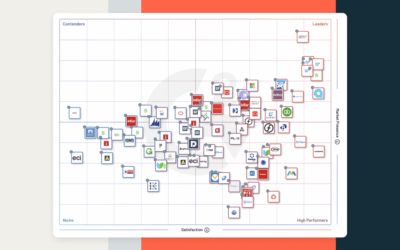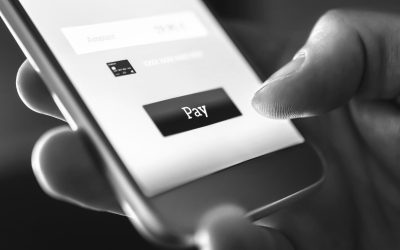Over half of businesses manage 1,000+ invoices a month — and spend 40+ hours processing them.
Invoices are the foundation of managing finances. Most businesses handle hundreds, if not thousands, of invoices each month, which takes up valuable time and resources. Freeing up those resources means optimizing your financial workflow from intake to payment. The spin-off benefits effect company profits and are felt across departments:
- Accurate financial records.
- Compliance with financial regulations.
- Healthier cash flow.
- Modern tools like electronic invoices and automation streamline financial management processes, save time and resources, and caretake vendor relationships.
What is an invoice?
An invoice is a document that lists the products or services a business has provided and the amount the customer owes. It includes important details like:
- Payment terms.
- Due dates.
- Order specifics.
- Payment methods.
Businesses across all industries use invoices to bill customers or clients and track accounts payable.
There are several types of invoices accounts receivable departments commonly use, each tailored to a specific use case:
- Sales invoice: A standard, one-time invoice used to request payment for goods received or services rendered.
- Recurring invoice: Sent out at regular intervals, often monthly, for ongoing services like subscriptions.
- Pro forma invoice: An estimate or quote sent before services or goods are delivered.
- Credit invoice: Issued when a business needs to provide a customer with a refund or discount.
- Debit invoice: Issued to increase the amount owed due to things like underbilling or adjustments in project scope.
- Interim invoice: Used for large projects that require multiple payments throughout the work.
- Past-due invoice: A follow-up request for payment that is overdue.
An invoice is a document that lists the products or services provided by a business and the amount the customer owes.
Key components of an invoice.
Invoices must clearly outline what customers are paying for, when the payment is due, and how they pay the bill. At minimum, your invoices should contain:
- Business information: Your company name, address, and contact details should be at the top to clarify who the invoice is from.
- Customer information: Add the client’s name and contact information so the invoice is personalized and easy to trace.
- Invoice number and date: The invoice number is a unique identifier to track the transaction. The invoice date is a reference point for payment terms and due dates. In other words, if payment is due within 30 days, that would be 30 days from the invoice date.
- Product or service details: Clearly describe what you’re billing the client for. Include specifics like quantity, unit price, and a description of the products or services rendered.
- Taxes: If applicable, add sales tax or VAT (value-added tax) so your invoice complies with tax regulations.
- Total amount due: The final amount the customer owes, including taxes.
- Payment terms and due date: Specify the invoice payment terms, including when payment is due and any penalties for late payment.
- Payment methods: What options do customers have to settle their bills? Usually credit card, bank transfer, or online payment portal (with the direct link noted here).
Create a template.
If you’re a brand new business owner, there are a lot of invoices in your future. Create an invoice template now to save yourself hours in time and effort. When requesting payment, simply fill in the blanks with customer and order details.
Use a pre-built template to simplify the process even further. Tools like Airbase offer customizable templates with all the relevant sections and elements already in place. As a bonus, invoice templates look professional and ensure a consistent, branded appearance.

The purpose of invoices in accounting.
It’s easy to think of invoices as bills. But they serve other purposes as well. Businesses use invoices for:
- Tracking revenue and expenses.
- Legal and tax documentation.
- Financial auditing.
Tracking revenue and expenses.
Invoices record transactions, services or products sold, and the amount of money flowing into the business. Accounting departments use this information to track earnings and expenses and get a clear view of the business’s financial state. When you follow proper invoicing practices, you always know who owes you money, when to expect payments, and what your cash flow looks like.
Legal and tax documentation.
Invoices also serve as legal proof of transactions, which protects both the business and the customer. When you issue an invoice, it establishes your legal right to collect payment from that customer.
If there are any disputes on either side, an invoice acts as solid evidence of the terms agreed upon and the services rendered. Invoices also make tax reporting much easier, as they provide a detailed record of income and expenses that will be invaluable during tax season to help you avoid penalties.
Financial auditing.
Invoices are indispensable when it comes to financial audits. Auditors rely on them to verify the accuracy of your financial records. They provide a detailed account of what you’ve earned, how much has been paid, and what is still outstanding. Well-organized invoices ensure that audits run smoothly and prevent any complications or delays.
When you follow proper invoicing practices, you always know who owes you money, when to expect payments, and what your cash flow looks like.
Invoice processing in modern accounting systems.
Many businesses still use manual methods to process invoices, but this approach takes too much time and is prone to mistakes. Modern accounting software automates the invoicing process for improved efficiency and accuracy.
Automated systems like Airbase slash invoicing processing times, lower costs, and reduce the burden on your accounting team. These systems streamline the entire process, from invoice creation to payment tracking. In fact, accounting automation reduces invoicing processing times by up to 80% and costs by 60-70%.
You can set up recurring invoices, automate reminders, and even integrate invoicing into your broader accounting system. This level of automation prevents missed payments and improves your financial recordkeeping and overall financial health.
Accounting automation reduces invoicing processing times by up to 80% and costs by 60-70%.
Common invoicing mistakes and how to avoid them.
Invoicing mistakes lead to unpaid bills, confusion, and strained client relationships. To avoid these issues, make sure you understand these common mistakes and how to prevent them.
- Incorrect or missing information: Always double-check that necessary details — customer information, invoice number, payment terms — are in plain sight.
- Inconsistent formatting: Stick to a standard format for every invoice so clients quickly recognize and process your invoices.
- Unclear payment terms: Explicitly state when payment is due and the consequences of late payment. Ambiguity leads to delays and frustration for both parties, but strict and clear invoice payment terms ensure healthy cash flow and timely payments.
- Delayed sending: Send invoices promptly after delivering goods or services. Late invoices create cash flow problems and may confuse your customers’ accounts payable departments.
- Timely payments: Emphasize the importance of timely payments to maintain healthy cash flow. Use clear language to explain payment terms and options, and offer early payment discounts to encourage prompt payment and avoid complications from past-due invoices.
Streamline your invoicing process with Airbase.
Managing invoices is an essential part of running a business, and automation tools like Airbase make the process much more efficient. From interim invoices for partial payments to recurring invoices for monthly subscriptions, Airbase’s invoicing software makes it simple to bill clients and collect payment — automatically.
If you’re ready to simplify your invoicing process and increase accounts receivable efficiency, schedule a demo with Airbase today!
Invoice FAQ.
Have more questions about invoices? Check out these common questions and answers.
Is an invoice a bill or receipt?
An invoice is a bill or payment request that outlines the services or products provided and the amount due. It differs from a receipt, which confirms payment has been made.
What is in an invoice?
There are several different types of invoices, but they all generally include details like the business and customer information, the products or services provided, the total amount owed, payment terms, and the due date.
Does an invoice mean you’ve paid?
No — just the opposite. It’s a payment request that shows the goods or services received and the amount that the recipient owes. A receipt shows you’ve paid. The invoice tells you it’s time to pay.
Does an invoice mean you owe money?
Yes, an invoice indicates that you owe money to the business that issued it for the products or services they provided.
 Jira Integration – Streamline Your Workflows
Jira Integration – Streamline Your Workflows  Ironclad Integration – Simplify Legal Operations
Ironclad Integration – Simplify Legal Operations  Asana
Asana 




